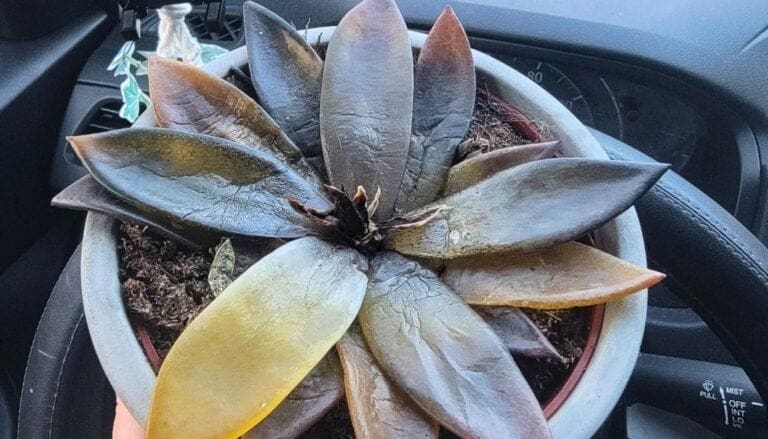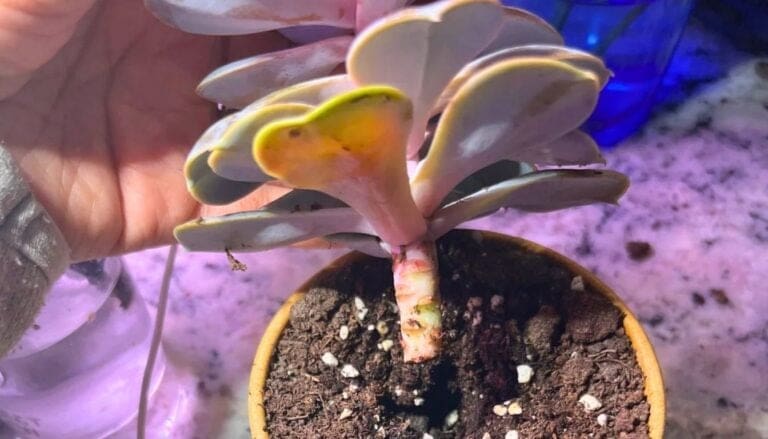What to Do with Succulent Cuttings?
Got some succulent cuttings and wondering what to do with them? No worries, I’ve got you covered!
You can easily turn those cuttings into brand new plants. It’s simple and fun, especially if you like watching new life sprout. 🌱
When I first started with succulents, I was amazed at how tough and easygoing they are. Just imagine filling your windowsill with more green buddies without spending a dime!
Do you like the sound of that? If so, stick around.
With just a few steps, you’ll see your cuttings take root and grow.
It’s a small miracle of nature right at home, and who doesn’t love a little magic in their everyday life?
Let’s get those green thumbs working! 🌵
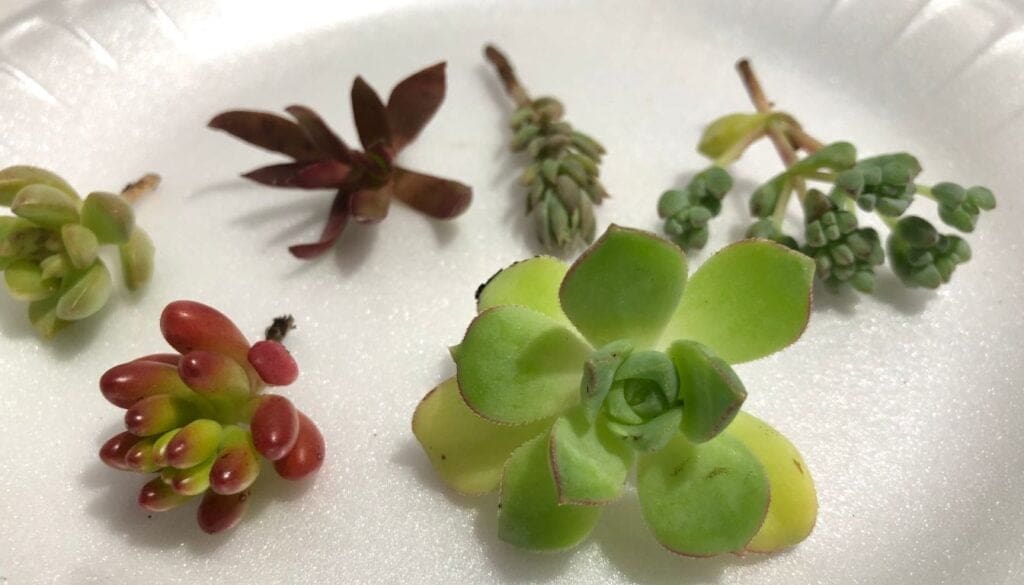
Please note: Simplify Plants is reader-supported. As an Amazon Associate, I earn from qualifying purchases made by our readers with no extra cost added to you all! Some links in the post are affiliate links and I get a commission from purchases made through links in the post.
Understanding Succulent Cuttings
Succulent cuttings can be a fun way to start new plants. Learn about different types and why propagating from cuttings can be a rewarding hobby. 🌿
Types of Succulent Cuttings
Taking succulent cuttings can seem a bit tricky at first, but it’s pretty straightforward once you know what to look for.
The most common types of cuttings include leaf cuttings and stem cuttings.
For leaf cuttings, I gently twist off a healthy leaf from the main plant. Make sure the leaf is whole and not broken.
Stem cuttings are great for plants like Jade or Echeveria. I can use scissors to cut a 3-inch piece from the stem.
These cuttings need to callus over for a few days before planting them in the soil.
You might be wondering, why wait? This step helps prevent rotting! Ready to try it?
Benefits of Propagating from Cuttings
Why bother propagating from cuttings?
First off, it’s a money saver! Growing new plants from existing ones costs almost nothing.
I also enjoy the satisfaction of nurturing new life. Watching a tiny cutting take root and thrive is pretty rewarding.
Plus, succulents are great for decorating my space. More plants mean more green in your home!
Finally, who wouldn’t want to share the plant love?
These are perfect for giving to friends—spread the joy! Who will you surprise with a succulent gift? 🎁
Preparing for Propagation
When I decide to grow new succulent plants from cuttings, it’s crucial to prepare properly. This involves picking the right parts of the plant, cutting them carefully, and gathering the necessary tools.
Let’s dive into each step! 🌱
Selecting Your Cuttings

I always start by choosing a healthy parent plant. A strong plant gives my cuttings a better chance to thrive.
I look for leaves that are plump and firm, avoiding any that look shriveled or damaged. A clean break from the main plant is essential, so I usually go for leaves that come off easily with a gentle twist.
When I pick stems, I ensure they’re about 3-4 inches long. The end of the cutting should be solid, not squishy.
It’s like selecting the best apple from a basket—only the best will do! 🍏
Cutting and Handling Techniques
Once I’ve made my choice, It’s time to make the cut.
Using a gentle hand, I ease each leaf away with a slight twist. For stems, I make my cuts clean and straight. If I mishandle it, the cutting might not root right, and nobody wants that!
Handling the cuttings carefully, I avoid touching the ends too much. They need time to “heal” or callus over. This step is essential to avoid rot.
Sometimes, I feel like a plant doctor! 🌿
Tools and Materials Needed
Now, let’s talk about the gear.
I always have a pair of sharp scissors or a knife handy. Keeping them clean is crucial to prevent any nasty infections.
Waiting a few days for my cuttings to callus over means I need some extra patience and maybe a sunny windowsill.
A small container filled with well-draining soil is a must. It helps the new roots grow strong.
Don’t forget labels if you’re growing different kinds—trust me, I learned the hard way!
And sometimes, I break into a happy dance when it’s all set! 🎉
By using the right methods and tools, I’m all set to watch my new succulent garden thrive!
Do you share my enthusiasm for growing new plants? 🤔
Rooting Your Cuttings

When it comes to getting succulent cuttings to grow, the right medium and environment are key. Let’s dive into how to set up your cuttings for success. 🌱
Choosing the Right Medium
Picking the best medium is like choosing shoes for a hike—you’re going nowhere without a good fit.
Succulents prefer a well-draining soil mix. Use cactus soil or mix potting soil with sand or perlite to help water flow right through. Waterlogged roots can spell disaster!
Think of this as giving your cuttings a comfy bed. Would you sleep on wet sheets? Neither do they!
You can even try using water to root succulents. Just pop the cut end into a jar with some water.
Change the water every few days to keep it fresh. Wanna try it? Give it a shot!
Creating a Proper Environment
Creating the right environment is like setting the mood for a party.
Your cuttings love bright, indirect light. Direct sunlight might toast those tender beginnings.
Find a sunny window where they can soak up rays without getting burned.
Maintain a warm spot, like a cozy room, around 60-75°F. They won’t need much water initially, maybe just a light misting. Over-watering can be a slow dance with disaster!
Do you enjoy a sauna? Your cuttings? Not so much!
Using a fan nearby? Sure, you can give it a whirl, just don’t let it blow them away. 😉
Aftercare of New Succulents
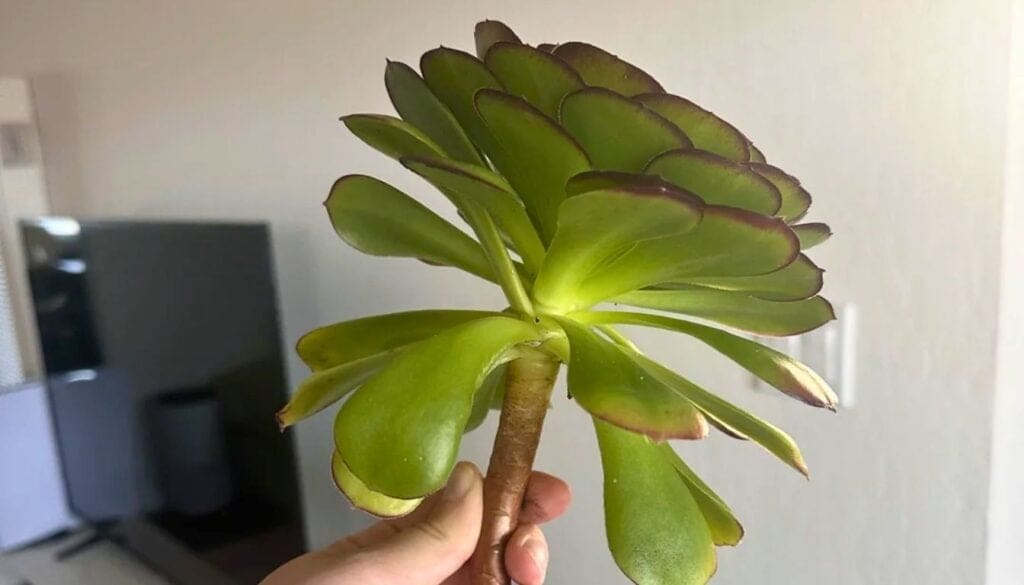
Taking care of new succulents isn’t tricky, but they do have a few special needs. 💧🌞 Find out how to water, light, and transplant them right, and they’ll thrive in no time!
Watering New Cuttings
When I first started with succulent cuttings, watering them felt like a mystery. You want them to stay alive, but you don’t want to drown them!
Cuttings need a bit more attention than mature plants.
Water them only when their soil is completely dry.
An easy way is to use a spray bottle to lightly mist the soil, not the plant itself. This keeps the roots moist without overdoing it. 🌿
I remember once using way too much water, and some leaves turned mushy. Learn from my mistake—less is more, trust me!
Providing Adequate Light
Light is a big deal for new succulents. They love sunshine, but not too much at first!
Place them in bright, indirect light. A sunny windowsill with a sheer curtain works great. 😎
Ever notice how plants bend towards the light? It’s called phototropism!
I found turning the plants every week helps them grow evenly. If they look pale or stretched out, they might need more light.
Consider a grow light if you don’t get enough sun. It’s a game-changer!
Transplanting to a Permanent Pot
Once your little cuttings start growing roots, it’s time for them to graduate to a big-kid pot.
Use a pot with good drainage and a mix designed for succulents.
I once used regular soil, and it held too much water. Not ideal! 🌱
Before you move them, make sure they’re healthy and sturdy.
A little tip: let the soil dry before transplanting. It’s easier to handle that way.
After the move, give them a small drink of water and sit back. Watch them settle into their new home! 📦
Do you have succulents you’re nurturing? Let me know how it goes, or if you’ve got tips of your own! 🌵😊
Troubleshooting Common Issues
Hey there! If you’re like me, you’ve probably faced a few hiccups with growing succulents from cuttings. Rot, pests, and slow growth can sometimes get in the way. Let’s tackle these common issues together!
Dealing with Rot
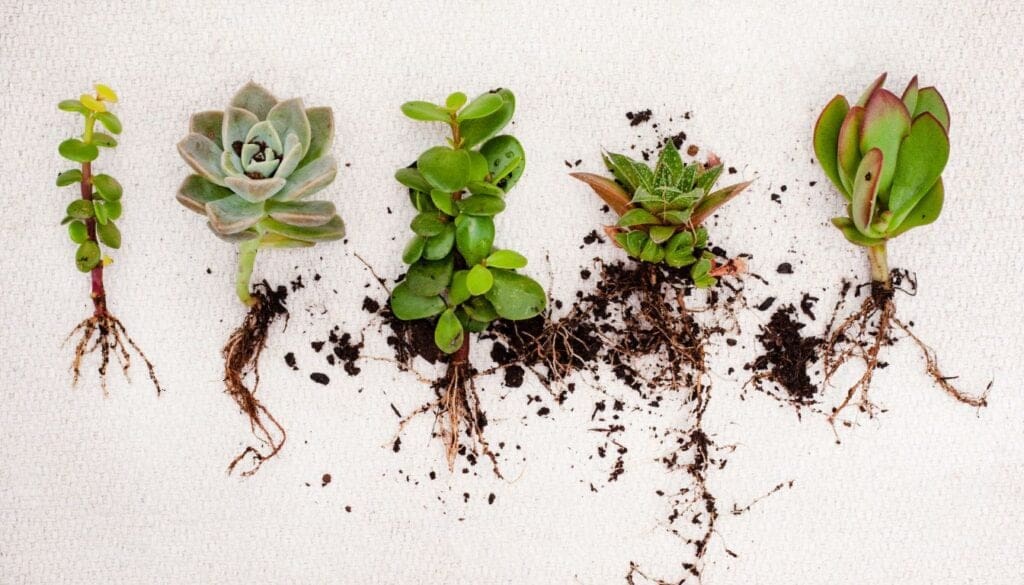
Uh-oh, one common problem is when the cuttings start to rot.
Rot often happens when they get too much water. Make sure to use well-draining soil and pots with holes. This way, water won’t hang around too long.
If you spot mushy leaves or stems, it’s time to act!
Gently remove the rotten parts with a clean knife 🗡️.
Let the cutting dry for a few days in a bright spot (but not direct sun). This helps it heal and stops more rot.
Ever had this issue in your garden? Share your story!
Pest Management
Pesky pests can be a real headache.
Tiny critters like spider mites and mealybugs love succulents, too. Let’s send them packing!
Keep an eye out for any unusual spots or webbing. If you do find pests, don’t worry!
Start by wiping the leaves with a damp cloth. For those persistent bugs, mix some water with a drop of gentle soap and spray it on.
Consistency is key, so repeat this every few days until they’re gone.
Got any funny stories about battling pests? I’d love to hear them! 😄
Slow Growth Challenges
It can be frustrating when cuttings seem slow to grow.
Patience is your best friend here!
Sometimes, there might be a lack of sunlight. Ensure your plants are getting at least 6 hours of indirect sunlight. You might need to move them closer to a window.
Nutrients also play a role.
Consider using a diluted fertilizer once a month to boost growth.
Remember, too much is not good, so keep it light.
Ever tried a growth trick that worked wonders? Let’s swap tips! 🌿
Feel free to ask questions or share your own succulent adventures! I’m always here to help.
Celebrating New Growth
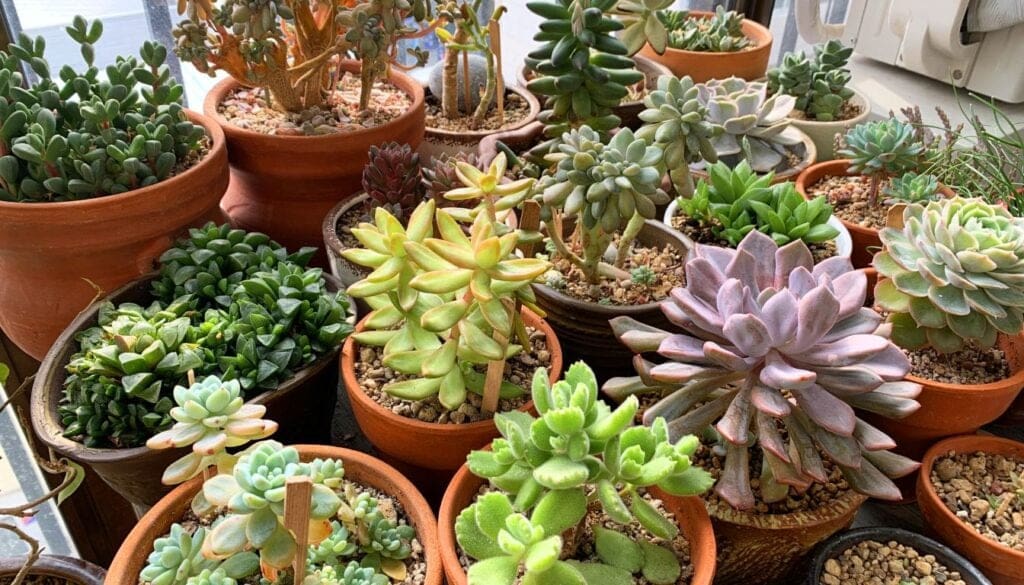
I get so excited when I see new growth on my succulent cuttings. It means all my care is paying off!
New leaves popping up and roots spreading are great signs. Let’s explore how these changes reveal progress and help grow your collection to new heights. 🌱
Noticing the Signs of Success
Every time I see tiny leaves starting to appear, I know my cuttings are doing well.
New leaves are like little victory flags! They may start small, but they will gradually grow bigger.
Roots peeking through the soil are another sign that your cutting is rooting well. Have you seen them yet?
It’s like watching a magic trick. These roots keep the plant strong as it grows. 😊
Changes in color can also tell us a lot. A healthy green is the way to go.
If the succulent is stretching, it might need more sunlight. Always adjust the space to fit your succulent’s evolving needs.
Proliferating Your Collection
Once my succulent starts growing, I love sharing cuttings with friends—or keeping them to grow my own collection.
More plants mean more fun!
Propagating from new leaves or stems is a fantastic way to expand.
You just need to prepare a few key items: a sharp, clean knife, and some well-draining soil.
Simply snip and plant!
Ever tried swapping cuttings with a friend? It’s a great way to find new varieties while sharing the love.
Who wouldn’t want more green buddies around? 🌿
Plus, it ensures you’ll never run out of unique plants to nurture!
What do you do with your extra cuttings? Let me know in the comments.
It’s always a blast to hear about others’ plant adventures! 🌵✨
Frequently Asked Questions
I’ve got some tips and tricks up my sleeve for growing new plants from succulent cuttings. Whether you’re a beginner or experienced gardener, there’s something here for you.
Let’s dive right in! 🌵
How can you propagate succulent cuttings without roots?
I like to start by letting the cut end dry out for a couple of days. This helps prevent rot.
Once it’s dry, I place the cutting on top of some well-draining soil and wait patiently for roots to form.
It’s pretty cool to watch nature do its thing! 😊
What’s the best way to propagate succulent leaves in water?
When I want to try something different, I use water propagation!
I suspend the succulent leaf above the water using a piece of plastic wrap or a toothpick.
This way, the end of the leaf isn’t touching the water directly.
It’s like a little science experiment on my windowsill!
What are the steps to propagate succulent leaves correctly?
First, I gently twist a leaf from the succulent, making sure it’s a clean break.
I let it dry for a few days and then place it on top of soil.
No need to bury it! Just wait for the magic to happen as roots begin to grow.
Isn’t nature fascinating?
What are some tips to speed up succulent propagation?
I find that giving my cuttings some sunlight really helps.
A warm spot with indirect light seems to do the trick.
Also, avoiding overwatering—it’s a plant’s #1 enemy.
I let the soil dry out between light mists.
Patience is key but look out for those sneaky roots!
After how long can you plant newly propagated succulents into soil?
Once I see a decent root system, usually after a few weeks, I know they’re ready for soil.
I carefully transfer them to a pot with well-draining soil.
Then, it’s a waiting game as they get comfortable in their new home.
Who doesn’t love a fresh start?
What’s the proper method to cut off and replant succulents?
Using a sharp, clean knife, I make a cut just below a leaf. Then, I follow the same drying and planting steps as before.
Ensuring the knife is clean makes a big difference— no funky stuff allowed near my plants! It’s like giving them a little spa treatment. 🪴
Recommended Garden Supplies
| Product Image | Our Recommended Gardening Supplies | Check Offers! |
|---|---|---|
Top Top
Top
Top
Top
Top
Top
Top
Top | rePotme Houseplant and Tropical Classic Potting Soil Mix | Check Offer On Amazon |
 Top
Top
Top
Top
Top
Top
Top
Top | Espoma Organic Indoor Plant Food | Check Offer On Amazon |
 Top
Top
Top
Top
Top
Top
Top
Top | GooingTop LED Grow Light 6000K Full Spectrum Clip Plant Growing Lamp | Check Offer On Amazon |
 Top
Top
Top
Top
Top
Top
Top
Top | Soil Moisture Meter | Check Offer On Amazon |
 Top
Top
Top
Top
Top
Top
Top
Top | Govee Hygrometer Thermometer, Bluetooth Enabled! | Check Offer On Amazon |
 Top
Top | LEVOIT Humidifiers for Large Room(Best For Plants) | Check Offer On Amazon |
 Top
Top
Top
Top
Top
Top
Top
Top | Upgraded DIY Automatic Drip Irrigation Kit, 15 Potted Houseplants Support | Check Offer On Amazon |
 Top
Top
Top
Top
Top
Top
Top
Top | Stainless Steel Heavy Duty Gardening Tool Set | Check Offer On Amazon |
 Top
Top
Top
Top
Top
Top
Top
Top | Bonide Insecticidal Soap | Check Offer On Amazon |
 Top
Top
Top
Top
Top
Top
Top
Top | Bonide 32 oz Spray Neem Oil for Organic Gardening | Check Offer On Amazon |
 Top
Top
Top
Top
Top
Top
Top
Top | Garden Safe Fungicide | Check Offer On Amazon |


